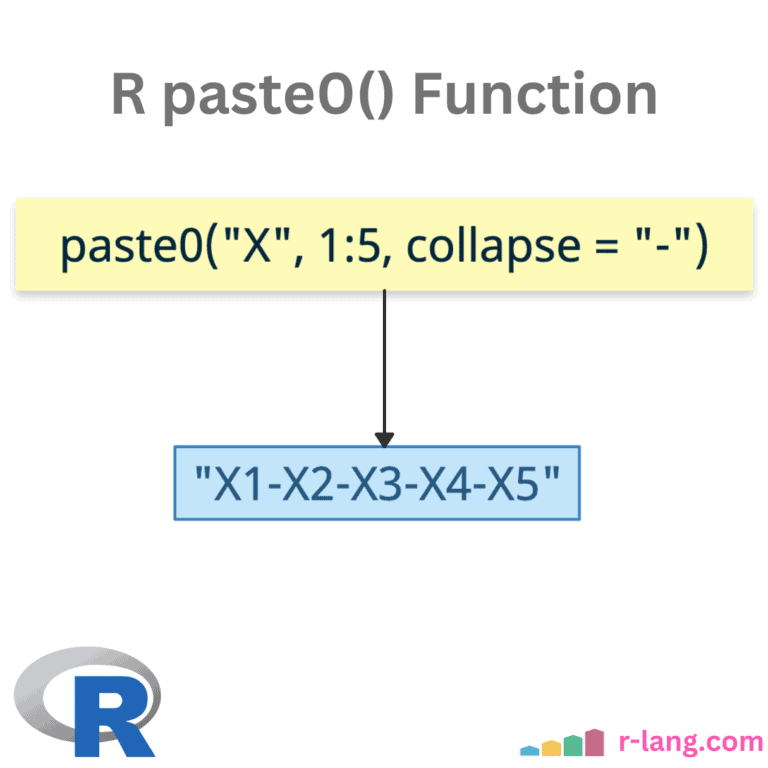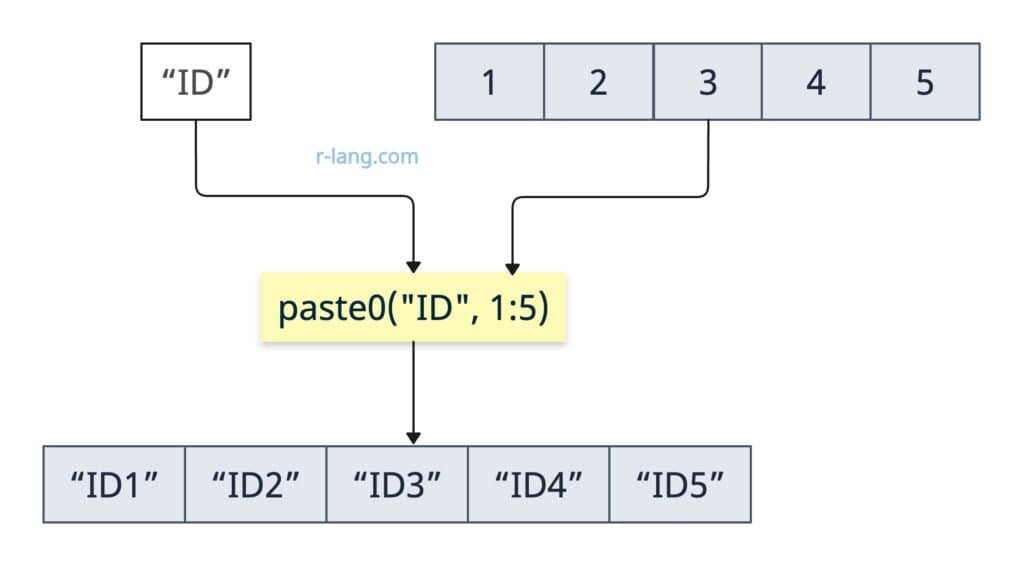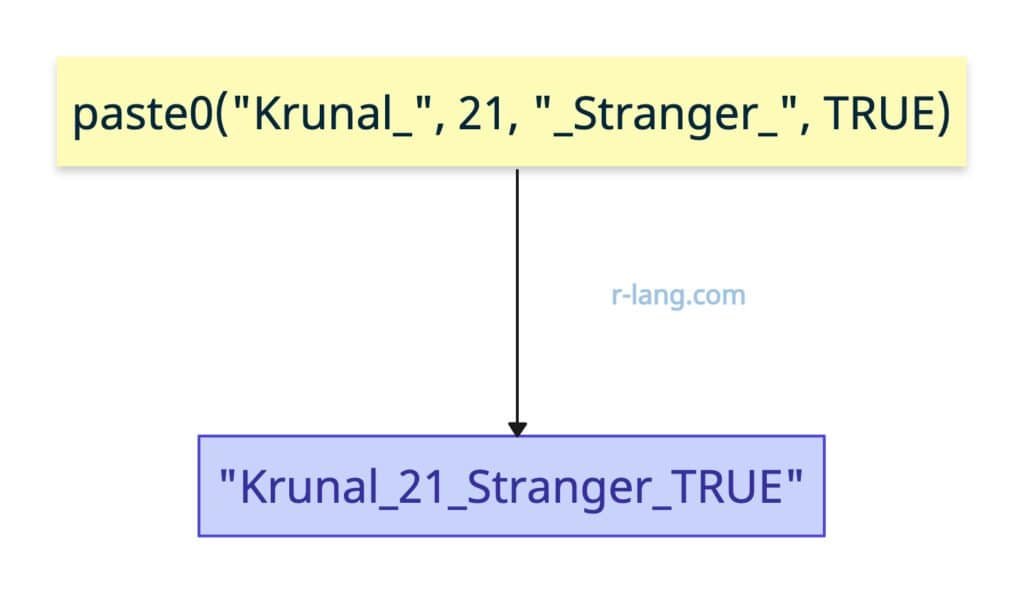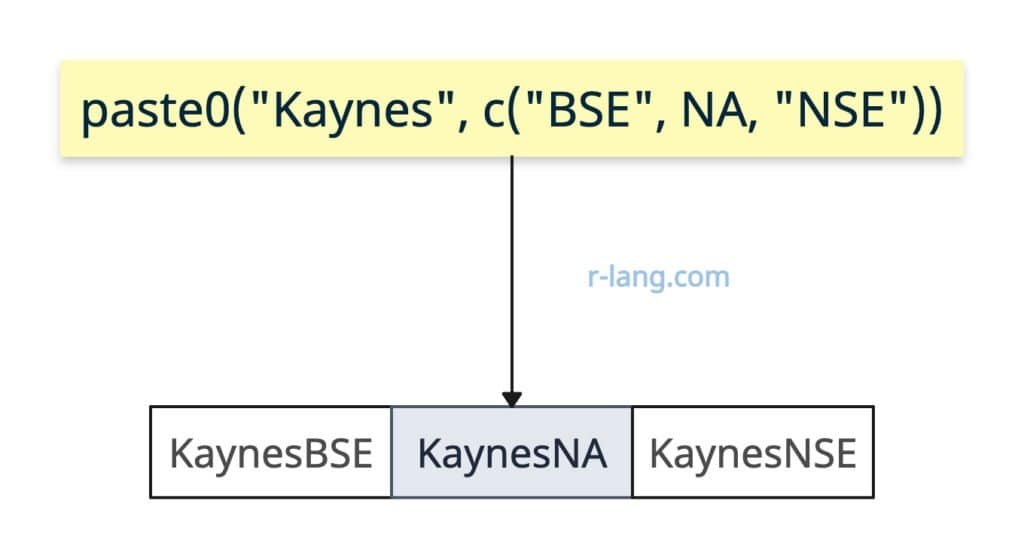R paste0() function concatenates strings without any separator between them. It is a shorthand version of paste(…, sep = “”).
paste0("Data", "Matics")
# Output: [1] "DataMatics" paste0(letters[18:22])
# Output: [1] "r" "s" "t" "u" "v"It is helpful for generating variable names, file paths, labels, and identifiers in a vectorized, compact way.
Syntax
paste0(…, collapse = NULL)Parameters
| Argument | Description |
| … | It is one or more R objects to be concatenated element-wise. |
| collapse | It is an optional character string to separate the results. |
Passing the ‘collapse’ argument
paste0("Data", collapse = " ")
paste0("Dog", collapse = "/")
paste0(letters[18:22], collapse = "*")
paste0("K", 1:7)
# Output:
# [1] "Data"
# [1] "Dog"
# [1] "r*s*t*u*v"
# [1] "K1" "K2" "K3" "K4" "K5" "K6" "K7"Difference between paste() and paste0()
The key difference between paste0() and paste() is that paste0() does not have a “sep” argument and thus concatenates strings without any separator, whereas the paste() function uses space as a default separator.
st <- paste("Eleven", "Mike", "Dustin")
st
# Output: [1] "Eleven Mike Dustin"
# Default value of sep with paste function
st1 <- paste0("Eleven", "Mike", "Dustin")
st1
# Output: [1] "ElevenMikeDustin"Vector recycling
If you are trying to merge two vectors in which both vectors have different lengths, the paste0() method handles vectors of unequal lengths by recycling the shorter vector.
paste0("ID", 1:5)
# Output: [1] "ID1" "ID2" "ID3" "ID4" "ID5"You can see that ID is the shorter vector, and it is recycled 5 times since the other vector has 5 elements.
Type coercion
If your input vector contains non-character types, then non-character inputs are coerced to character strings. That automatic conversion is called type coercion.
paste0("Krunal_", 21, "_Stranger_", TRUE)
# Output: [1] "Krunal_21_Stranger_TRUE"In the above code, you can see that Numeric (21) and logical (TRUE) inputs are converted to their character representations.
Handling NA values
If your input vector contains an NA value, the output will be NA too unless it is handled explicitly.
paste0("Kaynes", c("BSE", NA, "NSE"))
# Output: [1] "KaynesBSE" "KaynesNA" "KaynesNSE"Empty input
If the input is empty, the output of paste0() will be character(0).
paste0()
# Output: character(0)Empty string
What if the string is empty? The output will be an empty string, too! Remember, empty input and an empty string are two different objects.
paste0("")
# Output: [1] ""NULL
If the input contains NULL, it will be ignored, and only non-NULL values will be concatenated.
paste0(NULL, "Kaynes")
# Output: [1] "Kaynes"That’s it!

Krunal Lathiya is a seasoned Computer Science expert with over eight years in the tech industry. He boasts deep knowledge in Data Science and Machine Learning. Versed in Python, JavaScript, PHP, R, and Golang. Skilled in frameworks like Angular and React and platforms such as Node.js. His expertise spans both front-end and back-end development. His proficiency in the Python language stands as a testament to his versatility and commitment to the craft.





